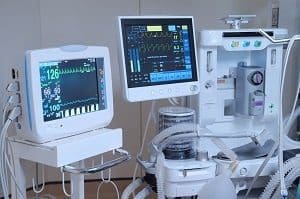
EU: Lead Added to REACH SVHC List


The most notable addition is lead. Although 31 lead compounds are already classed as SVHCs, the addition of lead (in any form) is important for a number of reasons. Here are a couple of the most significant:
Declaring the use of RoHS exempt forms of lead
Despite lead being widely restricted in many applications by RoHS, REACH, in toys, etc., it is still in widespread and legal to use where not restricted or exempted. Regarding the RoHS directive, this currently includes over 140 exemptions for lead of which over 40 are applicable to any product in scope and the rest are for uses in medical, monitoring and control equipment. Some of these uses, such as the lead in alloys of steel, aluminium and copper exemptions, and the lead in high melting point solder exemption are widely relied upon. In the case of the alloys the exemption is for ≤0.4% lead in aluminium, ≤0.35% in steel (for machining purposes and in galvanised steel), and in copper ≤4%. Clearly, these figures all exceed 0.1% – the reporting threshold for REACH Article 33. While these percentages are for the concentration in a homogeneous material it will invariably be the case that an alloy component of a product will be an article (as understood by REACH) and therefore the concentration from a REACH perspective will be the same.
For lead in high melting point solders, the situation may be different. A solder joint forms part of an article, and is not an article itself. Whilst the concentration of lead in the solder will be above 85% (as required for the exemption to apply), this will be diluted by the fact that the solder joint is part of an article – a power semiconductor device or circuit board for example. So whether or not the 0.1% threshold for REACH SVHC reporting is exceeded will be application specific, although it is likely that lead will exceed 0.1% in many of these types of components.
Declaring the use of lead for products out of scope of RoHS
RoHS has a wide applicability but it still excludes many uses including; national security (defence), aircraft, satellites, ships, large scale industrial tools (e.g. a production line), and large scale fixed installations (e.g. grid infrastructure). It also excludes any product made specifically to be part of any of these. Hence, there is a wide spread of industry who are less well informed about RoHS, and who still use lead – even if it not so widely nowadays owing to the increasing use of off-the-shelf components which will tend to be lead-free. These companies will now have an obligation to identify their uses of lead and inform their customers – and this will apply not just to the party placing the finished product on the market but to all players involved in the supply of lead containing articles in the EU.
Hence, whether inside or outside the scope of RoHS currently all companies should carefully evaluate what action they need to take bearing in mind that the obligation to provide SVHC information applies with immediate effect.
If you would like to find out how you can stay on top of regulatory issues related to EU REACH, sign up to our newsletter today!









